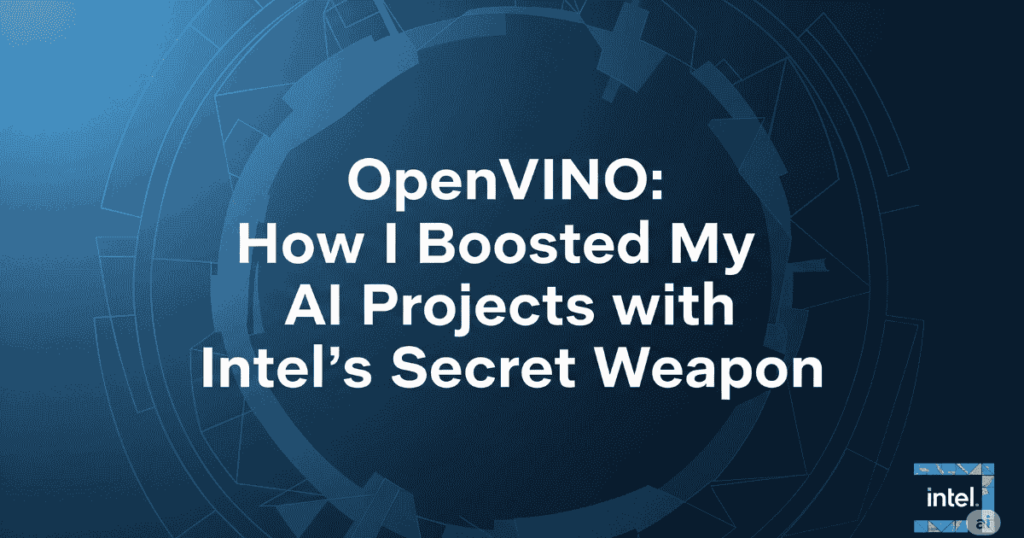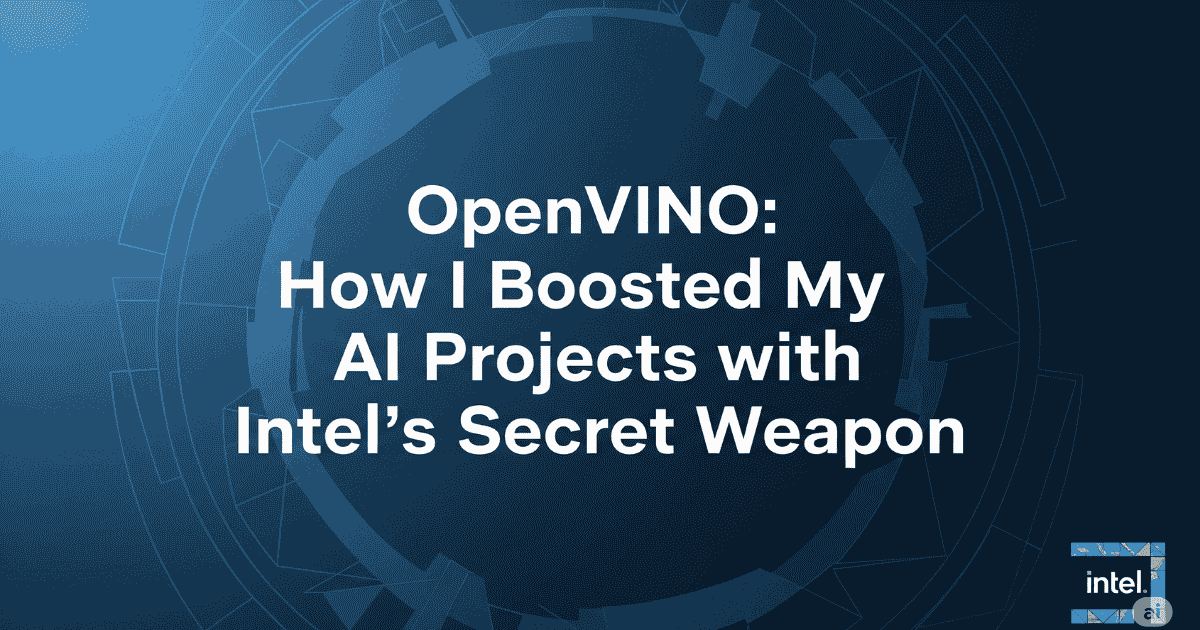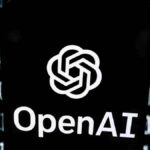Hello everyone! Today, I want to share my experience with OpenVINO. When I first started learning about artificial intelligence, I struggled with slow model speeds and complicated setups. Then I discovered OpenVINO. It was like finding a secret shortcut for my AI projects. In this blog, I’ll walk you through what OpenVINO is, why I started using it, and how it changed my work.

What is OpenVINO?
OpenVINO stands for Open Visual Inference and Neural Network Optimization. It is a toolkit created by Intel. The toolkit helps speed up AI models, especially for vision tasks like image recognition, object detection, and more. I like that it works on many devices—laptops, desktop PCs, edge devices, and even some cameras.
Why Did I Choose OpenVINO?
My journey with AI began with standard frameworks like TensorFlow and PyTorch. These are great, but sometimes, my models ran too slowly. I wanted my projects to work in real-time, especially for things like object detection using a webcam.
That’s when I read about OpenVINO. People said it made their models run much faster, but didn’t require much extra work. I was curious. Since Intel offers it for free, I decided to give it a try.
Installing
The installation was easier than I expected. I visited Intel’s website, downloaded the toolkit, and followed the step-by-step guide. I use Windows, so I picked the right installer. If you use Linux or Mac, they have guides for those too.
After installing, I found some cool demo scripts that came with it. That’s when my confidence grew. The demos worked right away, and I could see the AI model detecting faces in seconds.
Using My Models
I already had a model trained in TensorFlow. The next step was converting it to OpenVINO’s special format called Intermediate Representation (IR). This takes just one or two commands with a tool called Model Optimizer.
For example:
bashmo --input_model my_model.pb
This command gave me two files: an XML and a BIN. These files are the IR. I then used the OpenVINO runtime to load and run these models.
Real Speed Up
When I ran my model with OpenVINO, I was surprised. The speed jumped from seconds per image to almost real time. For object detection, I went from waiting for each result to seeing them live on my webcam.
OpenVINO also allowed me to choose where I wanted to run the AI model. If I had an Intel CPU, it used the special instructions there. If I had a GPU or a special device like Intel’s Neural Compute Stick, it could use that too.
Supported Models and Tasks
OpenVINO supports many AI tasks:
- Image classification
- Object detection
- Semantic segmentation
- Style transfer
- Pose estimation
It works with models from TensorFlow, PyTorch (via ONNX), Caffe, and more.
My Favorite Features
Here are things I love about OpenVINO:
- Speed: My models run faster without needing to re-write my whole code.
- Hardware Flexibility: I can use CPUs, GPUs, or edge devices.
- Easy Conversion: Converting models takes just a few commands.
- Sample Projects: The toolkit has many demos to help beginners like me start quickly.
Challenges I Faced
Nothing is perfect. Sometimes, converting very new model layers is tricky. The documentation helped, but I had to experiment. I joined forums and the OpenVINO community for advice.
My Honest Tips
- Start with the sample models before moving your own projects.
- Read the documentation—especially about supported layers.
- Try running your project on different devices to see the speed difference.
- Join the community for answers to tricky questions.
Conclusion
OpenVINO truly changed how I do AI development. Tasks that used to take minutes now take seconds. My devices can now handle real-time AI with less power.
If you’re like me and want to make your AI projects faster without learning completely new tools, give OpenVINO a look. You might be surprised how much your models can improve!
Let me know if you try it. I’m happy to answer beginner questions and share more about my journey. Thanks for reading!











